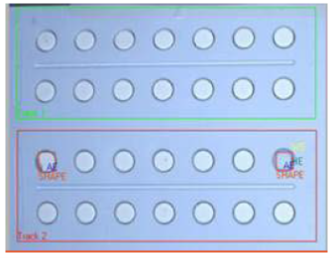
The COVID-19 crisis has taken the world by storm and paralysed every industry like never before. This unforeseen situation has raised many questions to the pharma industry, making them think about their readiness to tackle such challenges in the future. Is the pharma capable of running continuous production in a critical time like these? How equipped are they to maintain or even increase the output without compromising quality? How can the industry minimise human involvement in routine manufacturing operations?
It’s about time the pharma industry thinks about Artificial Intelligence (AI). The significance of AI was never realised more before than now! Big pharma has already started adopting AI for drug design and development. AI is also being used in specific patient education programs and for personalised medicines to facilitate treatment. However, there are still many areas in pharma where the uses of AI are yet to be explored.
Understanding AI
AI can be defined as any software algorithm that possesses human-like features, such as learning, planning, and solving problems. These attributes can be groomed, and the system made more intelligent depending upon the type of industry where it is going to be used.
Machine learning (ML) is presently the most common and widely used type of AI in businesses. It is predominantly used to process and analyse large amounts of data swiftly and rapidly. ML algorithms tend to “learn” over time and enhance themselves to produce better outcomes for the tasks that they perform repeatedly. In a typical manufacturing unit where process equipment continuously collect production data via connected devices, it is difficult for humans to process and interpret the massive amounts of information being compiled. ML-based AI is highly effective in such situations as it can analyse the data by recognising patterns and abnormalities. For example, if the production capacity of a pharma manufacturing plant is reduced due to some unforeseen activities, ML will inform the stakeholders, who can then take appropriate corrective actions.
With the evolution of interconnected artificial neural networks, there has been a rise in the use of deep learning (DL), which is another form of AI. Essentially, DL is a subset of ML and operates with different capabilities. With a DL model, an algorithm can determine on its own whether a prediction is accurate or not through its neural network. An excellent example of DL is chatbots used on websites, which interact with humans to solve their queries and enrich the customer experience. Another example of DL-based AI is autonomous or semi-autonomous vehicles, which receive information through millions of individual DL models that allow the vehicle to avoid accidents through various safety features. In this era of innovative technologies, there are opportunities for businesses to transcend to new levels. Utilising the correct technology according to business needs, companies can implement ML- or DL-based AI to develop intelligent infrastructure, potentially revolutionising the way they compete, grow, and engage with customers.
Harnessing the power of AI technology
AI has created an impact on several industries, including those based on machine vision inspection systems. Current in-trend business drivers of the market require vision systems to be adaptive, self–learning, and able to make decisions. Also, keeping the future roadmap in mind, many pharma companies are developing products based on the Internet of Things (IoT) and process analytical technology (PAT), which will be capable of generating vast amounts of data accumulated over long periods, using interconnected equipment. However, to analyse data at such a colossal scale is humanly impossible, and that is where AI can intervene. AI technology can be integrated into the existing as well as new products. AI-powered machines can analyse data to foresee the expected load through a discrete type of DL neural network. This data is then turned into insight, the insight into a result, and the result into action. This approach is known as “informative–based manufacturing” and is widely discussed on platforms such as Industry 4.0.
Current challenges in blister inspection systems
In the pharmaceutical industry, once tablets or capsules are manufactured, they are sent to be packed in a blister using a blister packaging machine. In most cases, the tablets or capsules are manually fed into the hopper of the packaging machine. Hence, there are chances of errors occurring during this process. Below are some of the commonly observed problems that arise during this process:
- Foreign particles
- Crushed/broken product
- Only body/cap in capsule
- Changes in shape, size, and form
- Spots ordiscolourations
Besides these, there are other challenges that traditional vision systems may not be capable of addressing effectively, such as learning a new model for a new product from an operator or detecting defects in products having similarly coloured packaging (e.g., grey tablet in grey foil). The learning time for a new product is almost 15–30 minutes for traditional vision systems. Sometimes, these may fail to detect the aforementioned colour-related defects, resulting in high rejection ratios and lowered productivity. In such a scenario, an intelligent camera-based inspection system for blister packaging machines can ensure defect–less product packaging, with minimal human intervention and no requirement for rework.
How does an AI-based inspection system help
AI-based applications involve opinion-based (a software algorithm that possesses human-like abilities, such as learning, planning, and problem–solving) inspection and, therefore, are more efficient than a manual inspection or traditional machine vision systems. Several pharma manufacturers are now opting for AI to find solutions for their most complex inspection requirements.
AI-based image analysis is a combination of learning and experience gained by human visual inspection, having the consistency and speed of a CPU-based system. AI learning models can effectively resolve tedious vision-related tasks that would be nearly impossible to perform using traditional machine vision systems. These models can identify minute defects such as low contrast product-and-foil combination (e.g., white on white or gray on gray). In addition, the learnings of various defects captured by a trained model can be transferred to new models so that every new model created will already know how to detect such defects, thus eliminating the need for repeated learning.


A B
Figure 1: Gray product on gray aluminium foil (A); white product on white foil (B)
An inspection system on a typical blister packaging machine is positioned immediately after the tablets/capsules are dropped from the hopper and placed into the cavities of the base foil. A reference image of a good product is fed into the system, and after that, the camera, along with software-based image algorithms, continuously captures images and compares them with the reference image. With an AI-enabled inspection system, the teaching or setup process for a new model is achieved via a single click, which minimises the product changeover time. If there are any defects or rogue products, the camera provides a rejection signal, and the defective blister gets rejected at the end of the line. All the faulty blisters are automatically collected in a separate rejection bin without any manual intervention.
Takeaway
AI is the future, and the sooner the pharma companies accept this fact, the better would be the ways they can plan and design the futuristic pharma manufacturing operations. It would be wise for the pharma companies to adopt AI slowly, changing one process at a time, and they can start with small processes such as blister inspection. This would give enough time to the operators to adapt to AI and help the manufacturers gauge the success of this new technology.
